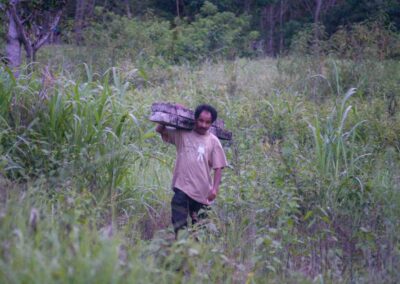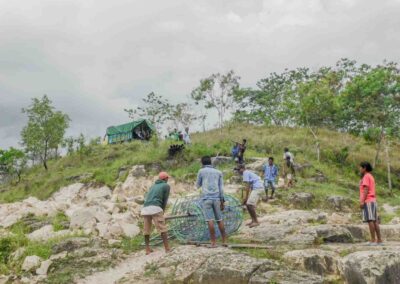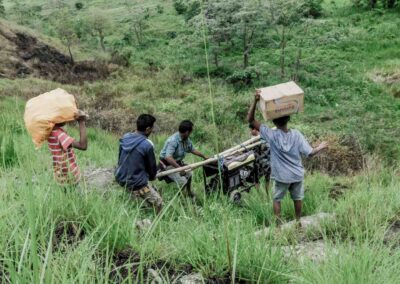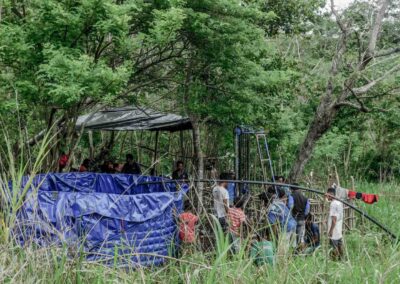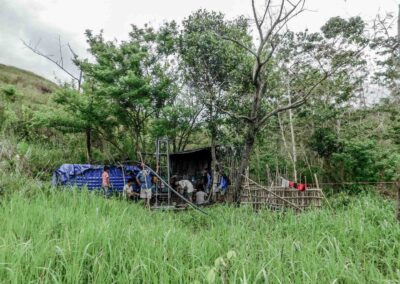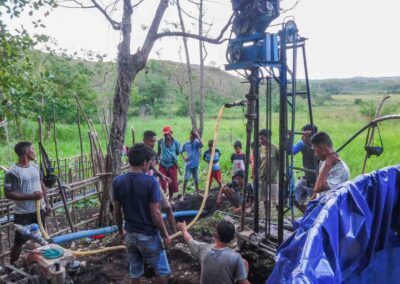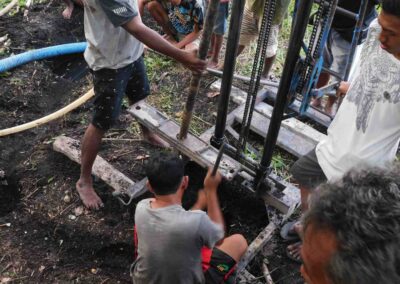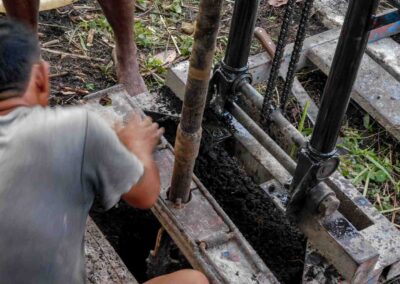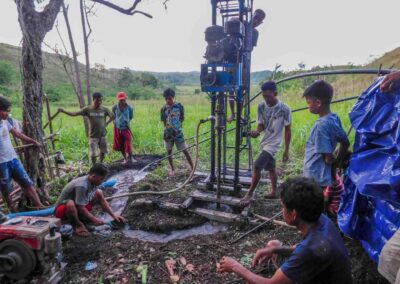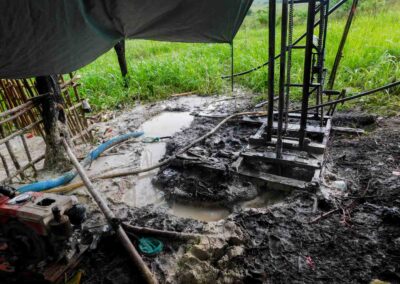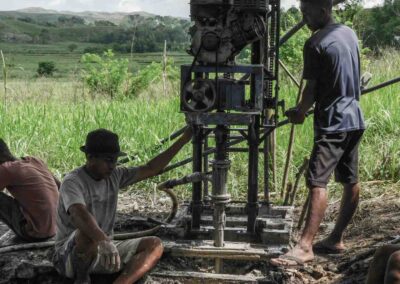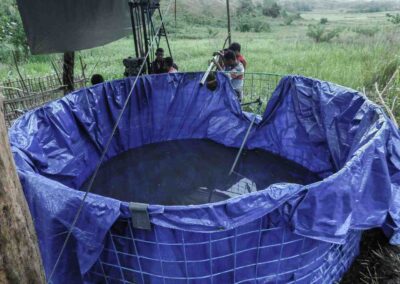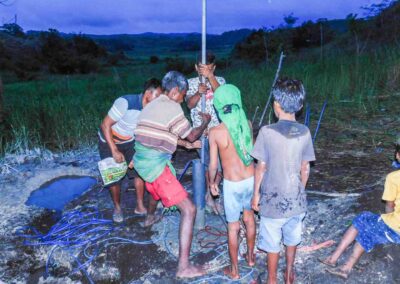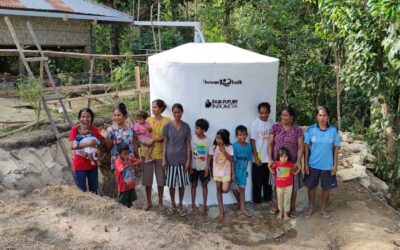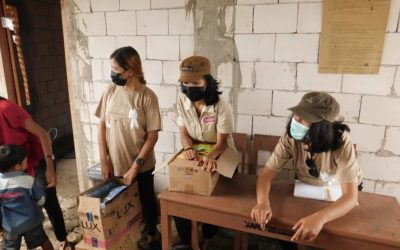I. Background
Water is the main key to a better standard of living, because water is one of the main human needs. And water has a huge impact on health, education, economy, welfare, and equality.
In Mbinudita, water is one of the energies that is currently quite difficult to obtain. One of the contributing factors is the type of rocky soil so that the point of the water source is far from the ground surface. Another reason is that there are not many wells available, so residents have to flock to wells that are often dry or walk 1.5-3 kilometers to the springs.
The standard of eligibility for clean water needs is 49.5 liters/capita/day. UNESCO world body itself in 2002 has determined the basic human right to water, which is 60 liters/person/day. In Mbinudita Sumba, it is less than 10 liters/person per day due to the difficulty of access to clean water.
To get water, Mbinudita residents have to walk about 1.5 – 3 Km to a spring, namely Matawai Payunu spring. Usually they use 5 liter jerry cans, 1 person can take 3-5 jerry cans, with cow or buffalo transportation aids, they can load up to 10 jerry cans more. There is also a traditional well, with a depth of 12-35 meters, usually mothers also queue to wash clothes and take them home for kitchen needs. Not infrequently also found livestock also joined the queue to get water rations.
II.1. Survey & Socialization
Water Point
This drill well was dug on the land of a resident of the village of Mbinudita named Mr. Indra, a distance of approximately 160-250 meters below the school with a depth of approximately 45 meters.
Benefit recipients
The biggest beneficiaries of this drilled well water are residents of the Mbinudita school and residents of Mbinudita in RT XX and XX, with a total of XX families, with a total of XX residents. This water will be stored in school reservoirs before being distributed to other reservoirs in other RTs through pipelines.
Road Access
This road access becomes very important because heavy equipment must reach the drilling point. The roads were still not congested, so the team had to find the shortest and possible route with several alternatives because if it started raining it would be very slippery.
Socialization
The socialization regarding the procurement of drilled wells in Mbinudita was carried out in schools with local residents, this socialization was carried out to get support from residents in the procurement process, construction to the maintenance process. All from citizens to citizens, to get a better and healthier quality of life.
II.2. PREPARATION
Drilling preparations are carried out in two stages, the earliest is the establishment of work houses and cleaning of access roads for vehicles to reach the drilling point, both for carrying heavy equipment and water tanker trucks, because the drilling location is approximately 500 meters from the road.
This work house is made of split wood and bamboo, the result of the community gathering around the drilling point. Everyone worked together, didn’t wait for orders, everyone took part on their own initiative. In less than 1 full day, the workhouse building had been erected, with the shape of a stilt house which would later be installed with a tarpaulin roof when the work began.
Traditionally, this process also begins with a ceremony, Mr. Awang as the traditional leader who still adheres to the Marapu belief, begins with a traditional ceremony to get the process of getting water smooth and does not get disturbed, then install a fence around the drilling on the condition that women are not allowed to enter. the area until the drilling process is complete.
II.3. DRILLING
Drilling of wells is carried out with the help of a drilling machine with a special drill bit because this area is quite rocky. The drilling process lasted for approximately 10 days, was stopped for a moment because the drill bit was broken because the rock was too thick so it didn’t penetrate immediately, and in the end had to replace the drill bit with a new one.
Water was found at a depth of 42 meters from ground level, with clean and fairly consistent groundwater on day 13, all residents rejoiced. From this depth the water rises to the surface up to the 18th meter.
Currently, the drilled well has cement cashing installed with a pipe valve ready for a water pump to be installed.
The whole series of drilling processes took 13 days with a borehole depth of 42 meters. In the graph beside it looks increasingly gentle, this is because above the figure of 30 meters very hard rocks are found so that in one day only a depth of approximately 1 meter is found.
II.4. Obstacles in the Field
-
- Rain, this causes slippery road access so that the process of mobilizing trucks carrying bots cannot reach the destination point and the solution is to be transported manually and by relay by residents with makeshift tools even with bare hands.
- The drill tool, at a depth of 30 meters, found thick rock which made the drill bit problematic and had to be repaired, so the team went to Waingapu to repair the drill bit so that it could return to work.
- In the drilling process, large quantities of water are needed, on the 6th day the water in the shelter defender ran out, I ordered tank water but it didn’t arrive. So because the drilling process must continue, the team took steps to drain the water in the school reservoir using a pipe with a distance of approximately 200 meters.
- The whole process was exceeded, and at the end of the activity there was a problem with community participation, this was because the process of loading and unloading drilling equipment was carried out at night, so not many residents participated due to the rainy weather and lack of lighting, so the team and only a few residents had to do this activity to completion.


